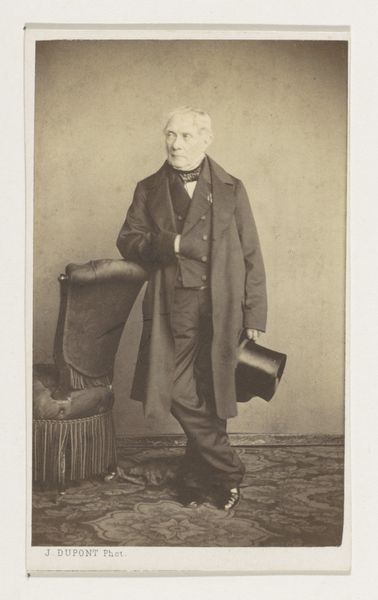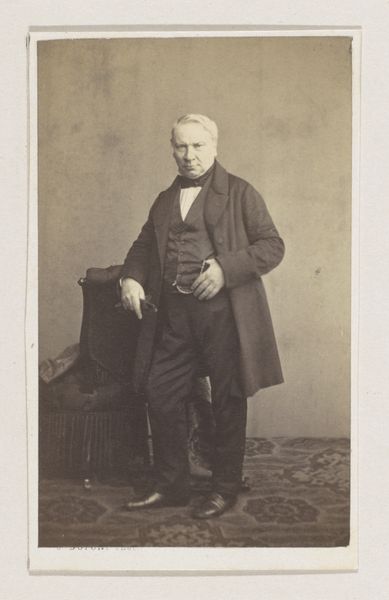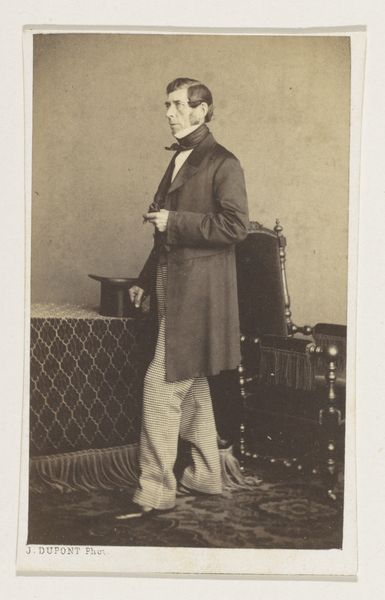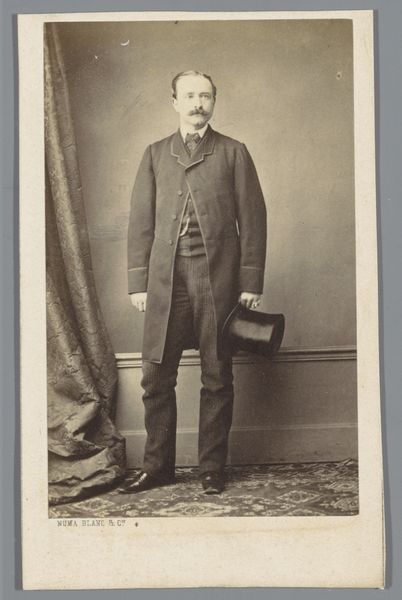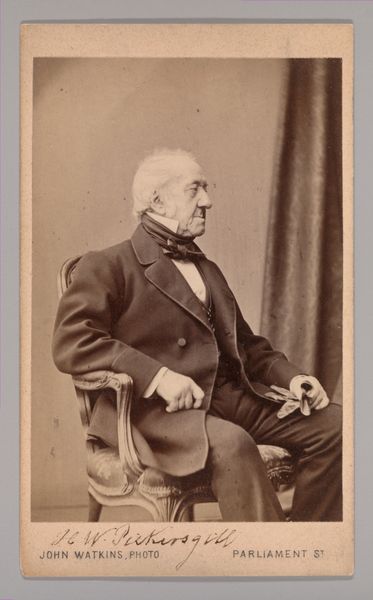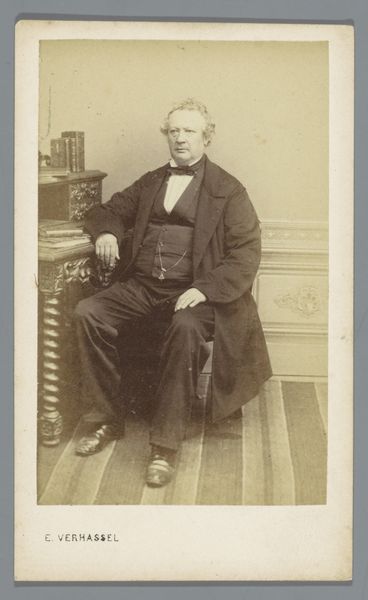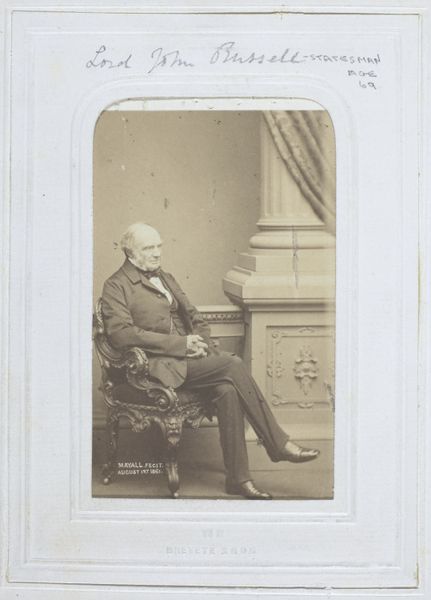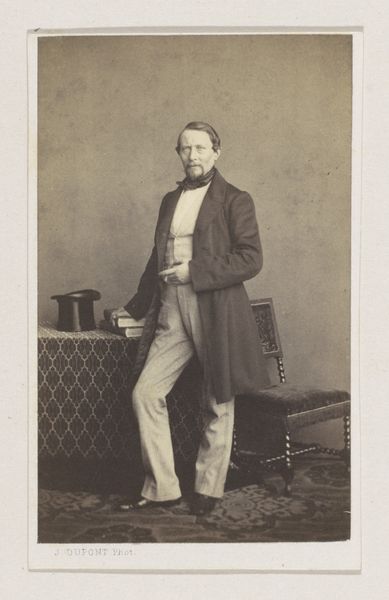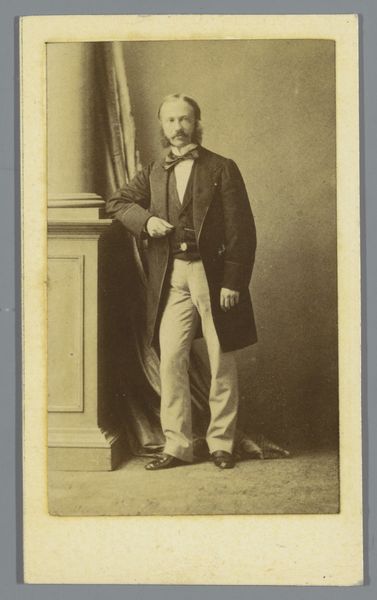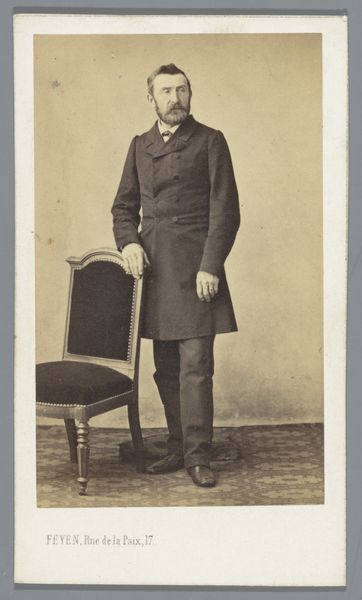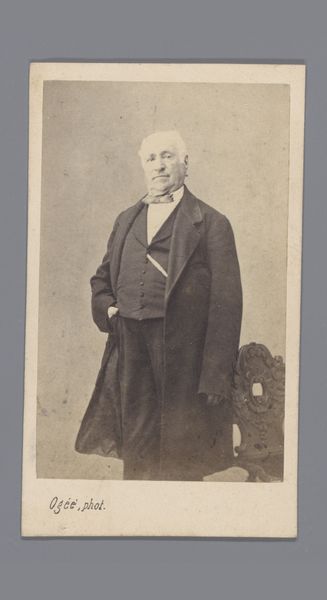
photography, albumen-print
#
portrait
#
photography
#
historical photography
#
albumen-print
#
realism
Dimensions: height 101 mm, width 62 mm
Copyright: Rijks Museum: Open Domain
Curator: This albumen print, dating back to 1861, is titled "Portret van de schilder Ignatius Josephus Van Regemorter, ten voeten uit," created by Joseph Dupont. Editor: The first thing that strikes me is the image's somewhat mournful atmosphere. The tones are muted, and the subject seems rather formal, almost stoic. It’s a very posed, studied sort of gravity. Curator: It's interesting that you perceive a stoic quality. If we contextualize this image within the burgeoning photographic portraiture of the 19th century, particularly its accessibility to a wider segment of society, we begin to see it as an assertion of identity. Photography provided a medium to craft and perform social roles. Van Regemorter, depicted here, actively crafts an image, showcasing himself as a member of the bourgeois. Editor: Yes, it is performative. Notice the accessories: the cane, the watch chain, the hat deliberately placed on the chair. These aren't simply items; they're symbols. The cane, for instance, speaks to status and perhaps even an affected world-weariness, while the hat suggests he is momentarily pausing his public life for this portrait. They speak of aspiration and achievement within that society. Curator: And isn't it also worth noting the pose itself? It borrows heavily from painted portraiture conventions, further emphasizing the construction of an image meant for public consumption, to shape and reinforce perceptions. I feel as if the artist carefully presents his individual subjectivity in ways he feels are legitimate to wider audiences, creating an aura of trust. Editor: Absolutely, this points to an intriguing interplay between reality and representation, the symbols blending together and suggesting both the painter's individual attributes and how these are understood by contemporary social standards. Curator: This conversation enriches how we think about photographic portraiture in this historical moment and highlights how it was used to reinforce or, occasionally, challenge identity constructs. Editor: Agreed; unraveling those embedded layers of meaning certainly deepened my understanding.
Comments
No comments
Be the first to comment and join the conversation on the ultimate creative platform.
